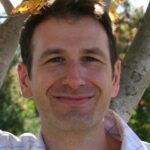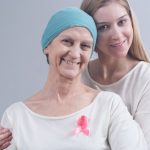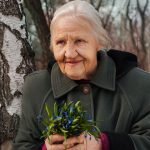Conversing About Death: Death Cafés
Brad S. Lichtenstein, ND, BCB
A month before his death, both my sister and I, together and on separate occasions, directly asked my father, “What are your wishes? What do you want to happen? What do we need to know?” His common retort was something to the effect of, “If I can’t take care of your mother, then I don’t want to go on.” Were he fully cognizant at the time as to just how incapable he was for caring for my mother, I wonder if his response would have changed?
All my life, my father would extol the virtues of caring for his family. I took this to mean financial, which justified his workaholic fervor. But caring for one’s family means so much more than just economic stability. Who would you wish to speak on your behalf, should you be unable, about medical decisions? What kind of care would you like to receive, and what do you want to do if it was no longer effective? How would you like to be treated? Where would you like to die? And, of equal importance, what measures do you have in place for any of the above to happen? After he died, my family was shocked by the amount of information my father failed to disclose. For someone with an expressed desire to care for family, his lack of communication did the reverse.
My father was not alone in his denial of death. For years, when I was teaching a class on terminal illness, I asked the students to complete their advanced directives and to share them with their loved ones. The majority encountered resistance to any discussion. My own mother, knowing I taught this class yearly, would dismiss the topic, saying how morbid it was for me to talk about dying. Most of my patients with either terminal diagnoses or trauma histories spoke to me about the isolation that grew from being unable to share their thoughts and fears about dying with those they loved. Obviously, a great need existed to have such meaningful dialogue in a safe and compassionate environment.
Monthly Death Cafés
About a year after his death, I had the fortunate opportunity to offer my first Death Café at Bastyr Center for Natural Health in April 2014, and have been leading these monthly gatherings ever since. I first heard of the Death Café movement several years earlier and longed to facilitate one. Based on the work of Swiss sociologist, Bernard Crettaz, the objective of a Death Café is “to increase awareness of death with a view to helping people make the most of their (finite) lives.”1 Crettaz held his first café mortel back in March 2004, inviting friends and strangers alike to gather with the common goal of talking about death while drinking tea and eating cake. Since then, the movement has grown worldwide.
The Death Café movement is a “social franchise”; as long as you adhere to the specific guidelines and principles, you can use the Death Café name and post to their official website. Their guidelines include:
- Safety: First and foremost, the role of a facilitator is to create a safe space wherein participants feel comfortable expressing their views without fear of retribution or discrimination. This requires the facilitator to articulate the ground rules for respect. Facilitators encourage compassionate, free-flowing conversation. During any given café, participants are likely to encounter diverging beliefs and opinions, and the facilitator cultivates open, non-violent communication. Participants do not have to accept the viewpoints of others, but they must agree to listening and speaking with respect.
- Lack of agenda and intention: Since the object of the death café is to increase awareness of death, the facilitator does not enter into the café hoping to lead participants to any particular conclusion or final course of action. Therefore, it is not an educational session with lectures, nor a support group.
- Non-profit: Requiring a charge for the event may preclude people from attending, and the goal is to be of service to all. However, to be sustainable, some cafés allow for donation and fundraising to cover expenses, such as room rental, food, and beverages.
- Cake: – And, of course, how could it be a café without cake, tea, and nourishing food?
At Bastyr Center for Natural Health (BCNH), we initially followed these guidelines. However, we saw a need to provide some education about end-of-life issues as well. At that time, we renamed our events Death & Cupcakes. For our first meeting under this new moniker, we were blessed to have someone from our nutrition department bake our cupcakes, which, of course, were both gluten- and dairy-free. We continued to have tea and cupcakes (or cake) at each event, along with other nutritious options.
Death & Cupcakes
Our first event had 60 participants, and we averaged 30 people at subsequent sessions. Roughly 80% of our participants were female, and the age range spanned from people in their 20s to those in their 80s. Although advertised at the clinic, a wide array of people came, from our clinic patients to hospice volunteers, from people dealing with terminal diagnoses to those who never have known anyone who has died. The common denominator for all was a desire to talk openly about a topic others find discomforting or unpalatable.
Before each event, we would prepare the room, creating small groupings of 4-5 chairs in a circle or around a table. These smaller groups allow for safety and for each member to speak, if they so desire. I begin with a centering meditation, then have participants meditate on what motivated them to attend that day. This seems to be enough to initiate conversation. After about 20-30 minutes, I bring the entire group together again, and I ask everyone what is arising and surprising. People were surprised to find that regardless of age, gender, health condition, or motivation, most felt an instantaneous bond with other members in their small group. Participants were then asked to disperse and form new configurations, with 1 person remaining in the same place. In the course of 2 hours, this process would happen about 3 to 4 times.
During the first round, people tended to be polite and speak about their reasons for attending. During subsequent rounds, conversations would deepen, and turned to issues of meaning and purpose, fears and concerns about dying in pain or alone, end-of-life preparations, and living with grief. At the end of the evening, attendees completed feedback forms. When asked what they were taking from the gathering, the most common response was gratitude for being present, open, and honest with strangers, as well as the opportunity to learn novel perspectives from others. When asked what, if anything, participants would be willing to commit to today as a result of these conversations, all echoed similar sentiments: live each day more fully, and talk more openly with friends and family.
From our very first Death Café, I would field several questions about advanced directives. Again, the need for such information is crucial, and fortunately Medicare recognizes this. As of January 1, 2016, Medicare began covering advanced-care planning. Having helped students, patients, and friends complete their advanced directives, I decided to hold a yearly Advanced Directives Party (ADP), dedicated solely to this during one of our regularly scheduled Death & Cupcakes events. With over 70 people attending, all interested in discussing the process of their own death, it was a huge success. As a physician, I believe those ADPs may have a greater impact on the health and well-being of the community than many of my individual sessions. Research suggests that physicians – and I believe this includes naturopathic physicians – are wary of end-of-life conversations, fearing that this may take away a patient’s hope. But consider the data:
- 80% of people want to talk with their doctor about end-of-life care if seriously ill, according to a survey conducted in 2012 by the California HealthCare Foundation; however, only 7% report having had these conversations with their doctor
- Furthermore, 82% of those Californians surveyed believe it is important to put their wishes in writing, yet only 23% have done this
- According to a National Survey by Conversations Project in 2013, more than 90% of those surveyed consider end-of-life conversations important; however, less than 30% had such conversations with family members
- According the Centers for Disease Control & Prevention (CDC) in 2005, 70% of people prefer to die at home; however, 70% of people die in a hospital, nursing home, or long-term-care facility
Patients want these conversations, yet we are not meeting their needs. Advanced-care planning is not just for the terminally ill; it is for all of us. Advanced-care planning is about more than selecting a medical power of attorney (POA). Detailed advanced-care planning explores a person’s deeply-held values. It identifies what matters most in their life. It examines what people want to know should they become terminally ill, and how they would like that information conveyed.
For our ADP, we used the Five Wishes form as a template. This form address 5 main areas:
- Medical POA/Medical Proxy/Agent
- Medical Interventions
- Comfort Care
- Treatment from Others
- Information to be Shared with Loved Ones
These parties stimulated some important family discussions. For example, when the topic of medical POA comes up, I ask everyone to identify where they fall between these 2 poles:
I want my love one to follow my wishes exactly as outlined, even if they are uncomfortable with my wishes;
versus:
I want my loved ones to do what brings them peace and comfort, even if it goes against my wishes.
Summary
To clarify, I told a story of one of my patients in hospice, who was adamant about her desire to be cremated. That was until her daughter begged her to be buried so that the family would have a place to visit. My patient was beside herself, fretting that she was being too selfish. Still, she didn’t like the idea of being buried. After sharing this anecdote, I saw a mother and daughter sitting in the back row. The mom said emphatically, “I want to be cremated.” The daughter said, with equal conviction, “I want you to be buried.” Smiling sweetly, the mom turned forward as she said, “I guess we have a lot to talk about then!” As they left, they each thanked me for helping them clarify unresolved issues.
When young and asymptomatic, people fail to consider their death, let alone medical interventions that loved ones might be forced to choose, should they be unable to speak for themselves. Not every practitioner is ready or willing to have such conversations with their patients. Yet, if our patients value personal autonomy, then end-of-life conversations are an extension of Tolle Totum, and another aspect of the determinants of health.
Start today. Hold a death café or dinner party with colleagues, friends, and family. Allow for space and time to explore thoughts and feelings as they arise. For me, such conversations reaffirm life and identify what gives life meaning and purpose. If unsure how to begin, here is a list of only a few questions to help you get started:
- How old were you when you first realized you would die?
- How do you want to die? How do you not want to die?
- If you were told by your doctor that you had 6 months to live, whom would you tell?
- What if your patient or loved one wishes to choose death with dignity? How would you feel?
- If you needed assistance going to the bathroom TODAY, who would be the first person you would ask for help? Whom would you feel unable to ask?
- What music do you want to be listening to at the time of your death?
I would love to know what happens!
 Brad S. Lichtenstein, ND, BCB, is a graduate of Bastyr University, where he is currently Chair of Homeopathy. His work emphasizes the creation of psycho-emotional-spiritual wellness in the midst of living with chronic, life-challenging illnesses and trauma. For several years, Dr Lichtenstein provided body-mind therapies at the Bastyr Integrative Oncology Research Center (BIORC). He was also involved in a joint research study examining end-of-life care and quality of death, during which time he led >500 guided meditations to hospice patients. At BCNH in Wallingford (Seattle), he supervises Integrative Body-Mind/Biofeedback shifts. He also trains practitioners in body-mind medicine, somatic therapy, and biofeedback, in person and via the internet. In addition, Dr Lichtenstein maintains a private practice, teaches group workshops, and writes.
Brad S. Lichtenstein, ND, BCB, is a graduate of Bastyr University, where he is currently Chair of Homeopathy. His work emphasizes the creation of psycho-emotional-spiritual wellness in the midst of living with chronic, life-challenging illnesses and trauma. For several years, Dr Lichtenstein provided body-mind therapies at the Bastyr Integrative Oncology Research Center (BIORC). He was also involved in a joint research study examining end-of-life care and quality of death, during which time he led >500 guided meditations to hospice patients. At BCNH in Wallingford (Seattle), he supervises Integrative Body-Mind/Biofeedback shifts. He also trains practitioners in body-mind medicine, somatic therapy, and biofeedback, in person and via the internet. In addition, Dr Lichtenstein maintains a private practice, teaches group workshops, and writes.










